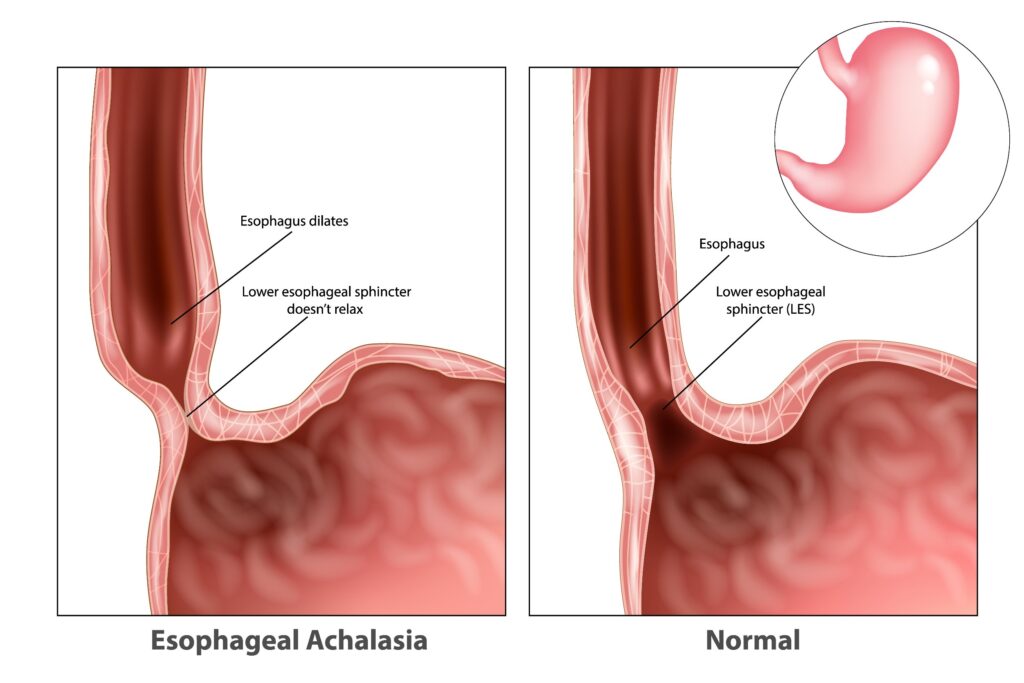Achalasia is a disorder of the esophagus. The esophagus is the long tube that connects the mouth to the stomach; the esophagus travels in the back of the chest until it emerges under the diaphragm, after which it meets with the top of the stomach. The esophagus functions to propel food down to the stomach after swallowing. A normal esophagus contracts (or squeezes) in a coordinated fashion, beginning at the top of the organ and progressing toward the bottom, closer to the stomach. At the end of the esophagus (just before it meets with the stomach), there is a sphincter mechanism called "the lower esophageal sphincter", which helps prevent stomach acid from entering the esophagus during and after meals. If the lower esophageal sphincter does not function properly, it can lead to gastroesophageal reflux disease, which typically causes heartburn and regurgitation of food.
Achalasia results from two problems related to the esophagus. The first problem is that the lower esophageal sphincter valve fails to relax after swallowing solid or liquid foods; the result is that food or liquid pools in the lower esophagus. This may cause someone to have a feeling of heartburn, regurgitation, or they may have a feeling as though food or liquid is getting "stuck" in their esophagus after swallowing. The second problem that contributes to achalasia is that the esophagus does not function to propel food down to the stomach appropriately; aperistalsis is the name given to describe this problem, where there is a lack of coordinated squeezing of the esophagus during swallowing.
Treating Achalasia
Achalasia can be treated in many ways. Occasionally, Botox can be injected into the lower esophageal sphincter, to allow the sphincter to relax and help food and liquid pass to the stomach. There are newer endoscopic procedures that can sometimes be used to help relax the muscles of the lower esophageal sphincter. Traditionally, achalasia is treated with surgery; the surgery involves cutting the muscular fibers of the esophagus to allow the lower esophageal sphincter to relax in order for food and liquid to pass into the stomach. Often times, the top of the stomach is wrapped over or behind the esophagus after the muscles are released in order to help prevent acid reflux after this procedure.
Twin Cities Achalasia Specialists
If you have been diagnosed with achalasia, schedule a consultation with Erin Worden or Dr. Kudav to learn more about treatment options and possible surgery to correct this condition.
